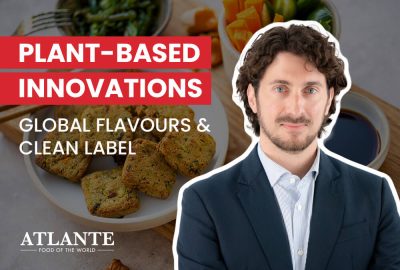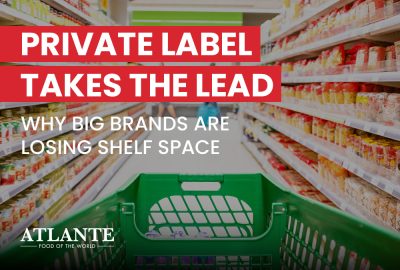Atlante
News
Predict the unpredictable

4 April 2023
Unprecedented levels of commodity volatility, imbalances between supply and demand exacerbated by climatic problems, supply chain challenges, the pandemic, geopolitical variables, and financial dynamics linked to exchange rates and interest rates.
Atlante’s CEO Natasha Linhart talks about the challenges of the current global scenario and outlines some strategies for facing the future
The Global Scene
- The ‘Just-in-Time’ global supply chain model that has typified the past decades is showing signs of profound crisis. This is a model is based on the relentless pursuit of competitiveness and driven by geographic area specific specialisation.
- Mechanization and the use of advanced agronomic technologies, pesticides and fertilizers have made it possible to multiply yields. The more complex the architecture, the greater the risk of failure, compromising the operation of the entire process.
- Soil fertility is not well established or uniform in same areas and countries that are naturally infertile can only be made so through the extensive use of inorganic fertilizers mostly sourced from other remote countries. The fertilizer supply chain is a critical risk factor for world food.
- Crop specialization, widely seen as the most logical organizational model, is another critical factor. Important crops such as cocoa and coffee are predominantly concentrated in countries that typically have strong social and political instability. In most cases, this instability is precisely a consequence of having relegated these countries to the role of cash crop producers, heavily influencing their politics and developmental model.
- Few countries concentrate on the production of key crops imported by so many. This is largely due to tradition, soil compatibility and consistency with global distribution strategies: just think of rice. The increasingly evident climate disruptions directly or indirectly threaten access to food even for that part of the world for which it has always been taken for granted.
The New Normal
In a globalized world, nothing remains local. While this may have been obvious, the events of the past three years have taken it upon themselves to demonstrate this in dramatic fashion.
- The resurgence in demand for steel in the aftermath of the first wave of Covid caused a steep rise in prices and a sharp contraction in the availability of tinplate, resulting in enormous suffering for the entire canning industry in the summer of 2021.
- The Russian invasion of Ukraine halted sunflower oil exports for many months, forcing the food industry to turn to alternative ingredients triggering further price hikes.
- The war in Ukraine and the exchange of sanctions with Russia have undermined fertilizer exports, making many crops economically unsustainable.
- The contribution of Ukrainian glassworks to the European preserves industry has failed.
- The blockade on Ukrainian grain exports alarmed the markets traditionally supplied by Ukraine, (Middle East and North Africa). This prompted local governments to secure stocks of European-sourced grain and helped keep prices high.
- War and the imposition of sanctions triggered soaring energy costs and shone a light on the risks associated with the severe energy dependency on Russian gas imports by large parts of the EU.
What is around the corner?
The scenarios hypothesized by analysts range from a soft landing with inflation falling to 2 percent and GDP recovering as early as the second half of 2023 to a global recession with sharp increases in poverty through to 2026.
It is also realistic to expect variable speeds in the upturn. This is a result of different starting conditions between different countries and regions, but also due to aspects that we have become accustomed to considering as structural:
- The intensification, extension and increased frequency of extreme weather phenomena,
- The dependence on factors outside one’s control, (energy supplies, access to fertilizer and so on)
- The influence of speculative logic, (gas has never been in short supply since
February 2022, but its futures have exploded, triggering a devastating
inflationary spiral)
- Increasingly costly and “unpredictable” logistics: the ship stranded in the Suez Canal and the tens of thousands of containers “stranded” in Chinese ports blocked by the lockdown are examples.
What can be done?
The rationale that has led us to this point no longer seems adequate to deal with the reality of a world now populated by more than eight billion human beings.
Squeezed between sharp increases in energy and fertilizer costs, shrinking arable areas and depleting soil as well as pressure from markets focused on maximizing competitiveness, many producers are discouraged from planting certain crops, resulting in shrinking supply and rising prices. The recent case of onion shortages in the Philippines is a case in point: the price of this crop has increased tenfold in the space of a few months.
World stocks of some commodities, chief among them rice, are at historic lows.
The war in Ukraine does not seem set to end any time soon and food is a very powerful weapon.
While there is no single guaranteed answer to this question, useful insights can be gleaned from what has been observed over the past 12 months:
- Diversification of sources: the cheapest choice is not necessarily the best choice. Contracting out the security of one’s food and energy sources purely based on cost exposes one to serious risks.
- Diversification in crop variety.
- Precedence of security of supply over price.
- Greater soil protection and the adoption of measures and technologies to curb water consumption and facilitate water reuse.
Behind every problem, there is an opportunity
Galileo Galilei





